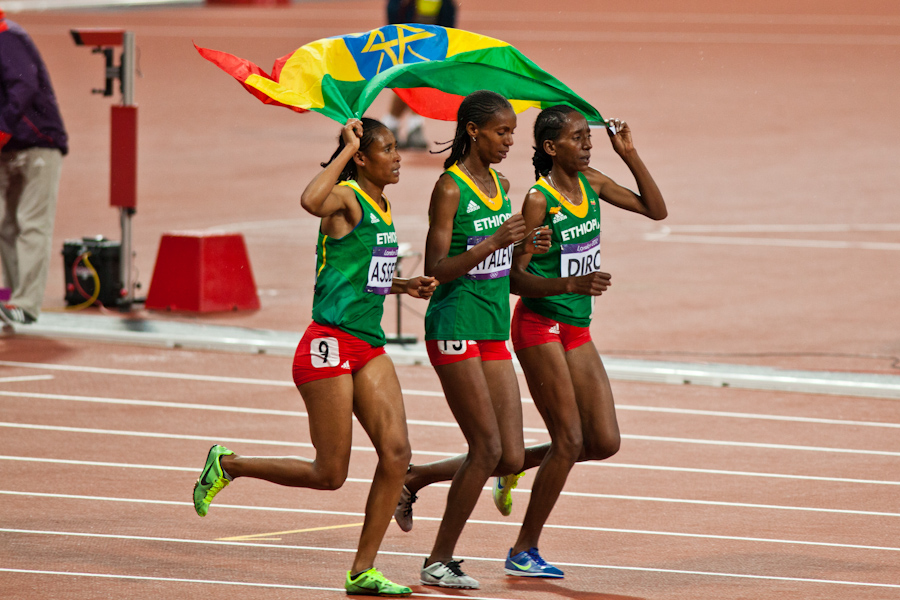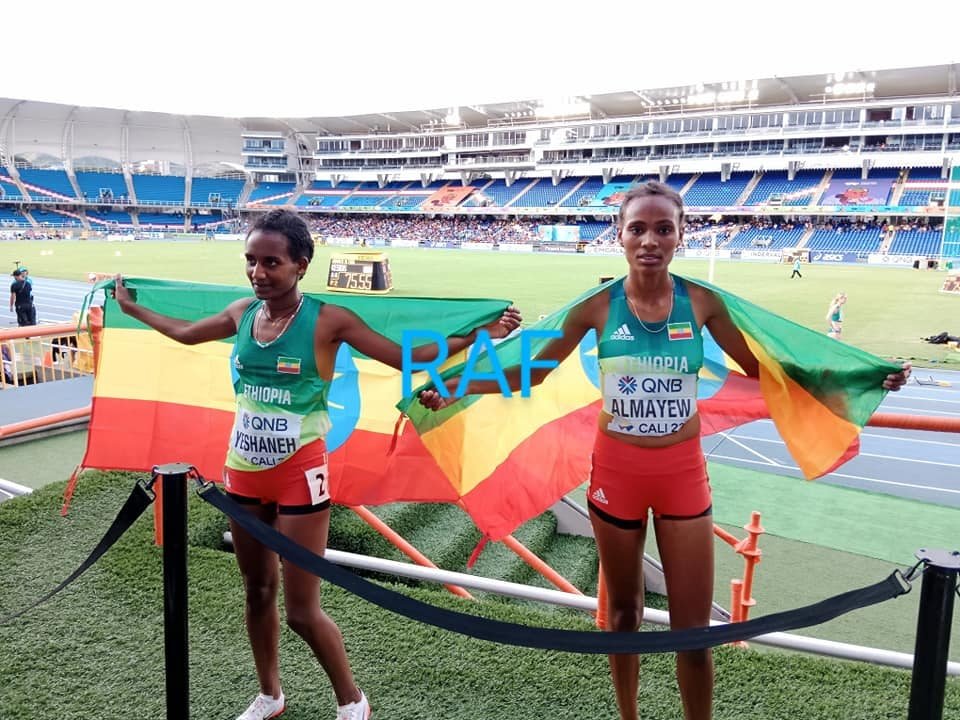Historical Context of Ethiopian Steeplechase Success

The enduring dominance of Ethiopian athletes in the steeplechase is a testament to a confluence of historical, cultural, and geographical factors. The rugged terrain, the inherent endurance of the people, and the rich athletic tradition have all played a pivotal role in shaping the nation’s success in this demanding event.
Cultural Influence and Geographic Terrain
Ethiopian culture is deeply intertwined with running, as it has been a crucial aspect of daily life for centuries. The country’s diverse and challenging terrain, characterized by high altitudes and undulating landscapes, has instilled a natural endurance in its people. This inherent ability to navigate difficult terrain has translated seamlessly into the steeplechase, a discipline that demands both speed and stamina.
Key Figures and Events
- The Rise of Abebe Bikila: The legendary Ethiopian marathon runner, Abebe Bikila, who won gold at the 1960 Rome Olympics, sparked a national passion for distance running. His iconic victory, a testament to the country’s athletic prowess, paved the way for future generations of Ethiopian runners.
- The Emergence of the First Steeplechase Champions: The 1980s witnessed the emergence of the first Ethiopian steeplechase champions, with athletes like Mohamed Kedir and Amanuel Mesel claiming victories in major international events. Their success established Ethiopia as a force to be reckoned with in the discipline.
- The Golden Era of Kenenisa Bekele: The dominance of Ethiopian steeplechasers reached new heights with the emergence of Kenenisa Bekele, widely regarded as one of the greatest distance runners of all time. Bekele’s record-breaking performances and multiple world championships solidified Ethiopia’s position as the undisputed king of the steeplechase.
Physiological and Training Advantages

The dominance of Ethiopian athletes in the steeplechase is not just a product of sheer talent and determination; it is also rooted in a combination of physiological characteristics and training methods that have been honed over generations. This section delves into the unique attributes that contribute to Ethiopian success in this demanding event.
Physiological Adaptations
Ethiopian athletes possess a unique set of physiological traits that make them particularly well-suited for the rigors of the steeplechase. These adaptations are largely attributed to their genetic heritage and the environment in which they train.
- High Altitude Adaptation: Ethiopian athletes often train at high altitudes, where the thinner air forces their bodies to produce more red blood cells, resulting in greater oxygen-carrying capacity. This enhanced oxygen uptake provides a significant advantage in endurance events like the steeplechase.
- Lean Body Composition: Ethiopian athletes tend to have a naturally lean body composition, which allows them to maintain a high aerobic capacity while minimizing the weight they carry during races. This leanness is crucial for efficient energy expenditure, particularly during the demanding obstacle-filled course of the steeplechase.
- Efficient Running Economy: Ethiopian athletes often exhibit remarkable running economy, meaning they can cover a given distance with less energy expenditure than their counterparts from other countries. This efficiency stems from factors such as their long legs, biomechanical adaptations, and years of rigorous training.
- Exceptional Endurance: The harsh environment of Ethiopia, characterized by high altitudes and extreme temperatures, has shaped the endurance capabilities of its athletes. This natural selection has resulted in a population with exceptional stamina, a critical factor for success in the demanding steeplechase.
Training Methods and Strategies
Ethiopian coaches employ a range of training methods that are specifically designed to develop the physical and mental attributes required for success in the steeplechase. These strategies are rooted in a deep understanding of the sport and the unique characteristics of Ethiopian athletes.
- High-Volume Training: Ethiopian training programs emphasize high-volume training, involving long runs, hill workouts, and extensive obstacle practice. This approach builds endurance, strengthens muscles, and improves overall fitness.
- Emphasis on Speed and Strength: While endurance is paramount, Ethiopian training also incorporates elements of speed and strength training. This ensures that athletes can maintain a high pace during the race and overcome obstacles effectively.
- Obstacle-Specific Training: Ethiopian athletes spend significant time practicing the technical aspects of the steeplechase, including water jump technique, hurdle clearance, and maintaining momentum over obstacles. This dedicated training translates into a smooth and efficient performance on race day.
- Mental Toughness: Ethiopian coaches prioritize the development of mental toughness in their athletes. This involves fostering a strong work ethic, instilling discipline, and encouraging a positive attitude. This mental fortitude is crucial for overcoming the challenges and fatigue inherent in the steeplechase.
Comparison with Other Countries
Ethiopian training methods differ significantly from those employed in other countries. While some countries focus on specialized training programs for specific events, Ethiopian training tends to be more holistic, encompassing a broader range of physical and mental development.
- Holistic Approach: Ethiopian training emphasizes a holistic approach, focusing on building a strong foundation of endurance, speed, and strength. This comprehensive training approach prepares athletes for a variety of events, making them versatile and adaptable.
- Emphasis on Natural Talent: Ethiopian training methods often rely on the natural talent and physical attributes of the athletes, rather than solely focusing on specialized training techniques. This approach capitalizes on the unique physiological adaptations of Ethiopian athletes.
- Focus on Discipline and Hard Work: Ethiopian training programs emphasize discipline, hard work, and dedication. This unwavering commitment to training is a key factor in the success of Ethiopian athletes.
Impact and Future of Ethiopian Steeplechase

The Ethiopian dominance in steeplechase has had a profound global impact, inspiring a new generation of runners and redefining the landscape of the event. The nation’s success has not only elevated the profile of the steeplechase but also sparked a wave of emulation, pushing other nations to invest in training and talent development. The future of Ethiopian steeplechase, however, is not without its challenges and opportunities, with several factors shaping the trajectory of this remarkable athletic tradition.
Global Impact of Ethiopian Success, Ethiopian steeplechase
The Ethiopian success in steeplechase has been a catalyst for global change, leaving an indelible mark on the sport. Their achievements have transcended mere athletic prowess, becoming a symbol of dedication, perseverance, and the power of collective ambition.
- Increased Global Participation: Ethiopian success has inspired athletes worldwide, leading to a surge in participation in steeplechase events. This global surge in interest has fueled the development of new talent and elevated the overall competitive landscape.
- Elevated Status of Steeplechase: Ethiopian dominance has raised the profile of the steeplechase, transforming it from a niche event into a globally recognized and celebrated discipline. This heightened interest has translated into increased media coverage, sponsorship opportunities, and a broader fan base.
- Innovation in Training Methods: The Ethiopian success story has spurred innovation in training methods, as coaches and athletes around the world seek to emulate their success. This exchange of knowledge and expertise has led to advancements in training techniques, biomechanics, and overall athlete development.
Challenges and Opportunities for Ethiopian Steeplechase Athletes
The future of Ethiopian steeplechase is not without its challenges. However, the nation’s dedication to the sport, combined with its commitment to developing young talent, provides a solid foundation for continued success.
- Competition from Emerging Nations: The rise of other nations, particularly Kenya and Morocco, presents a significant challenge to Ethiopian dominance. The competitive landscape is becoming increasingly fierce, requiring Ethiopian athletes to maintain their edge through continuous training and innovation.
- Financial Constraints: Limited resources and infrastructure can hinder the development of young talent. Securing adequate funding for training, coaching, and travel is crucial for nurturing future generations of Ethiopian steeplechase athletes.
- Maintaining a Legacy: The challenge lies in maintaining the legacy of Ethiopian steeplechase success. This requires a continued commitment to developing young talent, providing access to quality coaching, and fostering a culture of excellence.
Factors Influencing the Future of Ethiopian Steeplechase
The future of Ethiopian steeplechase is a dynamic landscape, influenced by a complex interplay of factors. These factors will shape the trajectory of the nation’s dominance and determine the success of future generations of athletes.
- Government Support and Investment: Continued government support and investment in athletics are essential for nurturing talent and providing athletes with the resources they need to excel. Investing in infrastructure, coaching programs, and athlete development initiatives is crucial for sustaining the nation’s success.
- Technological Advancements: Technological advancements in training, performance analysis, and injury prevention will play a significant role in shaping the future of Ethiopian steeplechase. Embracing these innovations will be essential for maintaining a competitive edge.
- Cultural Influence: The enduring cultural influence of running in Ethiopia is a significant asset. The tradition of running, deeply ingrained in Ethiopian society, provides a fertile ground for nurturing future generations of steeplechase athletes.
Ethiopian steeplechase runners are known for their incredible endurance and tactical prowess. They often dominate the field, showcasing their strength and determination on the track. For a deeper dive into the history and legacy of Ethiopian steeplechase runners, check out ethiopia steeplechase.
From legendary figures like Kenenisa Bekele to the rising stars of today, Ethiopian steeplechase continues to be a testament to the country’s athletic prowess.
Ethiopian steeplechase runners are known for their exceptional endurance and tactical prowess, often dominating the international scene. This dominance is a testament to the country’s rich athletic heritage and the dedication of its athletes. To understand the roots of this success, delve into the history of ethiopia steeplechase , where generations of runners have honed their skills on challenging terrains, ultimately shaping the sport’s global landscape.
Ethiopian steeplechase, a captivating blend of strength, strategy, and endurance, continues to inspire awe and admiration.